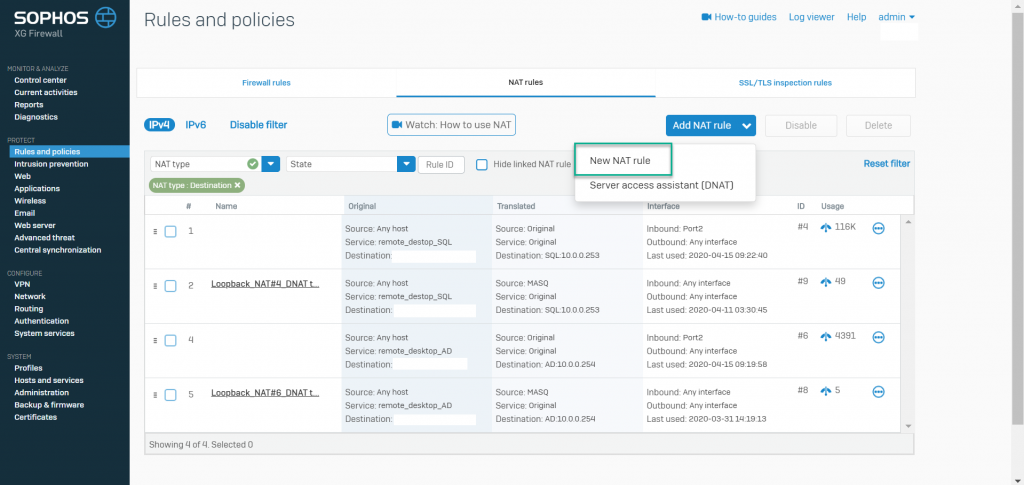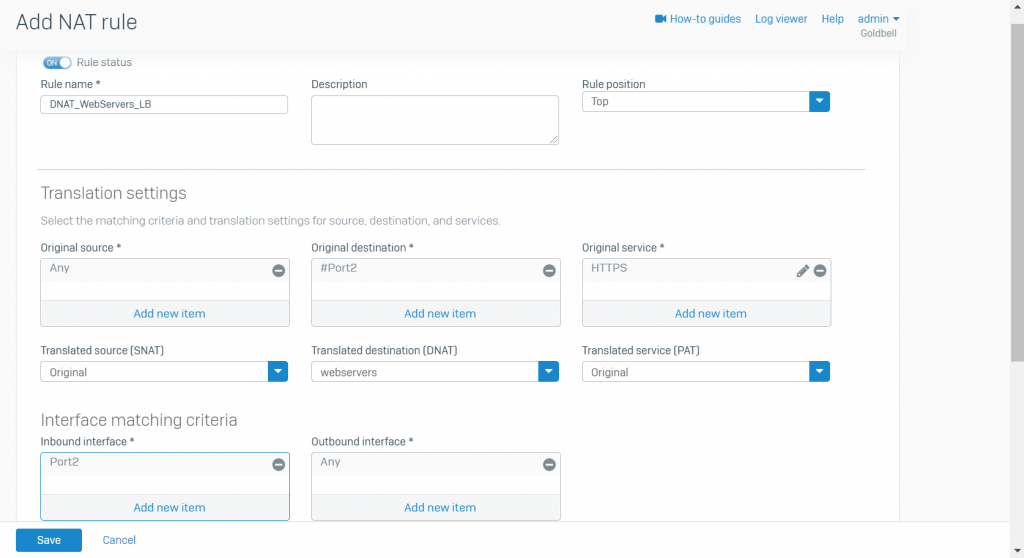
Overview
The article introduces how to configure DNAT with Load Balancing for outside client can connect to Web Servers
Diagram

How to configure
Identifier for 2 Web server
- Navigate to Hosts and Services -> Choose IP Host -> Click Add
- Name
- In IP Version: Choose IPv4
- In Type: Choose IP List
- In List of IP Address: Enter the IP Addresses of 2 web servers
-> Click Save

Create DNAT rule
- Rules and policies -> Choose NAT rules -> Click Add NAT rule -> New NAT rule

- Enter name for DNAT rule
- In Rule position: Choose Top
- In Original source: Choose Any
- In Original destination: Choose WAN port
- In Original service: Choose HTTPS
- In Translated source (SNAT): Choose Original
- In Translated destination (DNAT): Choose webservers which was created before
- In Translated service (PAT): Choose Original
- In Inbound interface: Choose WAN port
- In Outbound interface: Choose Any

- In Load Balancing method: Choose 1 on 5
- Round-robin: Requests are served sequentially, starting with the server next to the previously assigned server. Use it when you want to distribute traffic equally and don’t require session persistence.
- First alive: Incoming requests are served to the primary server (the first IP address of the range). If the primary server fails, requests are forwarded to the next server and so on. Use it for failover.
- Random: Requests are served randomly to the servers with equal load distribution. Use this when you want equal distribution and don’t require session persistence or order of distribution.
- Sticky IP: Traffic from a specific source is forwarded to the mapped server. Use this when you want the requests to be processed by the same server.
- One-to-one: Requests are sent to the mapped IP addresses. The IP addresses of the original and translated destinations must be equal in number.
- In Health check to check server
-> Click Save


Leave a Reply